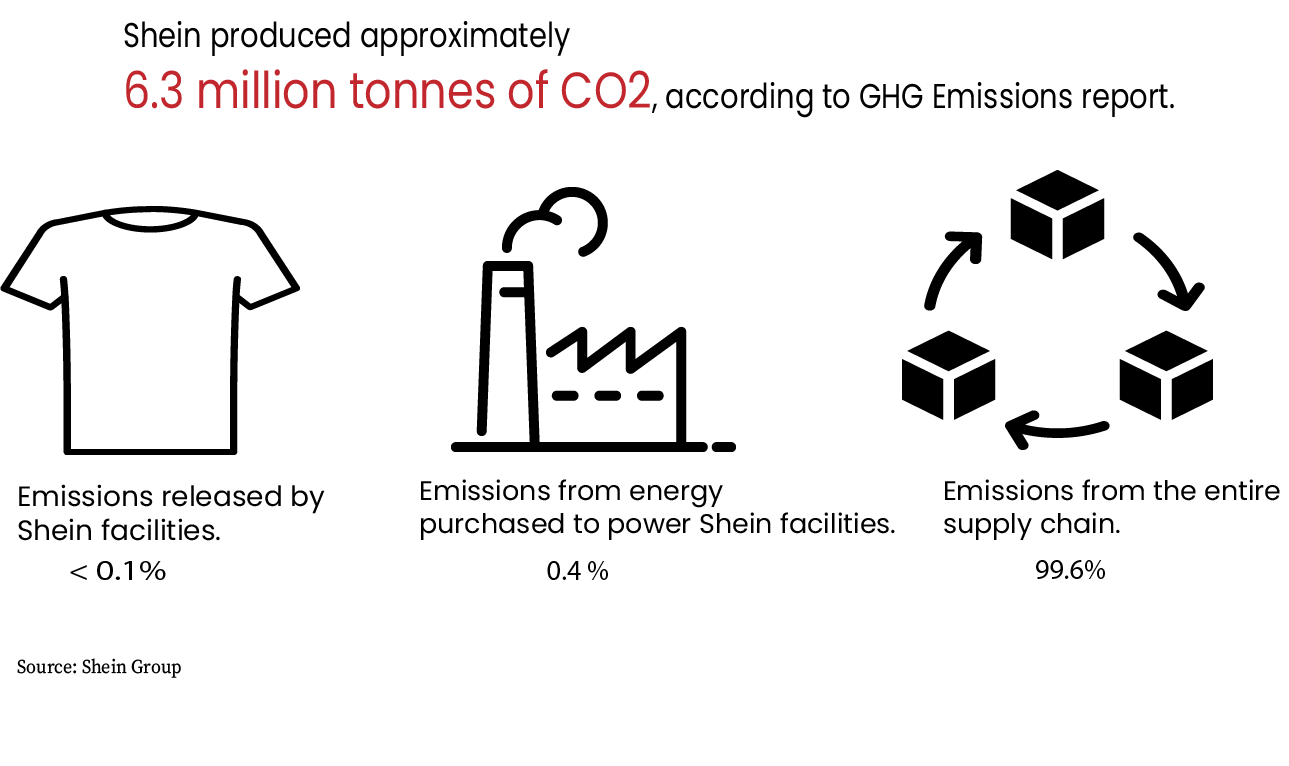Google Trends data shows that ultra-fast fashion clothing retailer Shein is searched more often in states with high poverty percentages.
“There’s a very simple answer to that – Shein is affordable,” said Teju-Adisa Farrar, an independent environmental consultant and researcher, in response to why people in poorer states were searching for Shein.
“And so unfortunately, that means that folks with less money are not necessarily aware [or] even thinking about the climate and environmental impacts because they don’t have a lot of resources to make other choices,” Farrar added.
Shein is categorized under the umbrella of fast fashion brands along with H&M, Zara, Forever 21 and more. Fast fashion can be defined as clothing that imitates high-end fashion but is cheaper, made of low-quality materials and mass produced. It keeps up with latest trends by sampling catwalk fashion or celebrity culture and caters to customer demand by producing garments with a short turnaround time between trends. In the case of Shein, at least 500 new fashion products are added to their website everyday.
Many years ago, buying clothes was an event carried out a few times a year but with online shopping, it has become a daily or weekly occurrence for many. The overproduction and overconsumption of clothes has paved the way for throwaway culture where a garment is worn only a few times before being discarded. This has led to excessive textile waste which is either burned or dumped in the ocean, polluting the environment.
Despite the many cons, fast fashion brands have been increasingly popular with Gen Z. Social media like TikTok, Instagram and YouTube are flooded with clothing hauls by influencers who promote these brands, sponsored or not. Hashtags like #SheinHaul and #ZaraHaul have billions of views on TikTok, ultimately prompting viewers to invest in these clothes.
States like Mississippi, West Virginia and Arkansas rank first, fourth and fifth in the U.S. Census Bureau’s regions with high percentages of people in poverty. The same states are the top three states with high Google search interest in Shein.
Affordability could be the major drive behind this overlap of poor states being highly interested in the low-cost clothing retailer. For example, a dress on sale costs as little as $2.90 on Shein’s U.S. website.

“If you’re working class, if you live in poverty, and the only way that you can feel better about yourself is through material excess and you don’t have access to that, then you’re going to constantly [feel] so devalued by society,” said Farrar, adding that consumerism in America is an economic, environmental and a psychosomatic issue.
Shein steadily rose in the international market with its low-cost, trendy apparel and online-only business model. The company was valued at $100 billion in a funding round earlier this year, according to Bloomberg. That figure is worth more than H&M and Zara combined – two fast-fashion giants that were market leaders before Shein took over.
With increasing success in the U.S., Shein announced plans to establish three distribution centers in the coming years to ensure faster shipping times for its American customers. Currently, the e-commerce startup has operations in Guangzhou, Singapore and Los Angeles and reaches more than 150 countries with their goods. More than 6,000 new fashion, beauty and lifestyle products are delivered on a daily basis, according to Shein’s press release.
Despite its astronomical success, allegations of environmental damage, worker exploitation, and copyright theft have been shrouding the company’s image. In an attempt to combat them, Shein announced their commitment to reduce “absolute GHG emissions across its entire value chain” by 25% by 2030.
By doing so, they revealed their business’ carbon footprint for 2021 – Shein produced approximately 6.3 million tonnes of CO2 in 2021 which is equivalent to almost 7 billion pounds of coal burned, according to the United States Environmental Protection Agency. Shein said that a large part of their environmental impact is generated in the supply chain which includes sourcing materials, manufacturing, and product distribution.

In 2019, the United Nations has reported that the fashion industry is responsible for 8-10% of the world’s greenhouse gas emissions, which is more than the aviation and shipping sectors combined.
According to the EPA, around 85% of all textiles thrown away in the country are either dumped into landfills or burned.
“A lot of the secondhand clothing ends up in landfills […] and the rest of it goes to places like Haiti and Ghana and their secondhand clothing market which is overrun by clothes from Western countries.
“So it’s not sustainable environmentally, but also socially, it’s not sustainable because we can’t keep consuming at this amount because then you’re never satisfied,” Farrar, who is an honoree for the 2022 Conscious Fashion Campaign by New York Fashion Week, added.
During the Global Fashion Summit held in Copenhagen in June, Shein had announced a $15 million donation to a non-profit working with textile workers in Ghana. The global charitable entity, Greenpeace International addressed the donation via a tweet, calling it “nothing more than a #greenwashing stunt.”
A few days ago, @SHEIN_Official announced a $15m donation to an NGO working with textile waste workers in Ghana.
But without any drastic change to its ultra-fast-fashion model, this is in fact nothing more than a #greenwashing stunt.#DetoxMyFashion https://t.co/kT1O2y6vMx
— Greenpeace (@Greenpeace) June 13, 2022
“I personally don’t think there’s anything Shein could do to better themselves. Because their business model is based on cheap labor extraction and environmental degradation,” Farrar said.

You must be logged in to post a comment.